SCRUM
"SCRUM" is a methodology of managing projects in such a way that managers know exactly when, and how hard, to breathe down the necks of their underlings.
It also has some benefits around transparency and a focus on making pretty, colourful and minimal-wordage graphs. Which management-types love.
SCRUM is iterative, which means that you start each month with a list of tasks and by the end of the month you have a list of tasks that have been completed. That is the extent of the iteration. Compare this to Ye Olden Days where you started a year with a list of tasks, and at the end of the year you fired the people most responsible for not doing them all. And then released the product anyway.
SCRUM revolves around charts and tables and graphs and lines and curves of best fit etc. The most important of these instruments of measuring impending failure is the Burn Down Chart. The Burn Down Chart shows how much work remains this iteration, and how much has already been completed.
The "work remaining" figure is a number of hours that is estimated at the beginning of each month by each team. Its more an art than a science, which is where the term "agile development" comes from.
Agile, after all, is Latin for "I dunno, what do you think?"
There are four distinct stages to "an iteration" and each stage is visible on a typical Burn Down Chart.
Stage 1: The Zone of Good Intentions
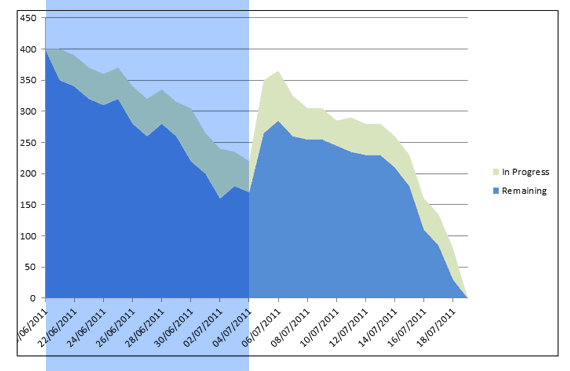
Every iteration starts with a feeling of liberation. A feeling of freedom from the noose of the previous month's Burn Down Chart. It also comes with a feeling of intense invincibility and the capacity to take on immense amounts of work.
At least, that's how it feels...
After a few days with a surprising amount of supposed progress things start to go slightly wrong. In the case of Software Engineering, to which SCRUM is usually applied, the end of Stage 1 is punctuated by a series of bug reports arriving from Test Technicians complaining that the work done so far is of such poor quality that they've had an early finish and the so-called Developers really should take a long look at themselves in the mirror.
Stage 2: The Zone of Agility
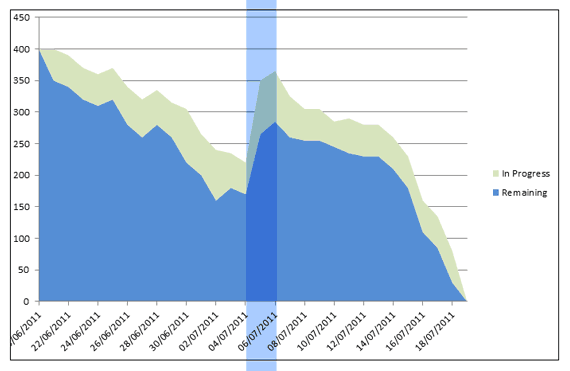
As I said before, 'Agility' is Italian for "being prepared when the shit hits the fan". Phase 2 is where tasks suddenly start appearing that weren't there before. Things like "Bug: The thing you were supposed to have done appears to have instead been attempted by a blind badger and an illiterate wombat. Fix it. I'm going to the pub."
But that's fine. That's what agile development is all about. It keeps you on your toes!
Stage 3: The Zone of Impending Doom
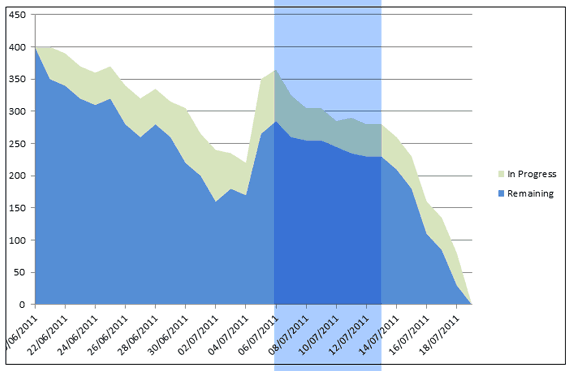
Stage 3 is like watching an episode of a TV show where you know a character dies. You've seen the adverts that week and you've read the Radio Times article on how Bob dies; while fixing the family combine harvester and drinking a keg of scrumpy.
(Does cider come in kegs? I've just realised I'm mentally ill-equipped for this analogy).
Phase 3 is all about a horrible feeling of impending doom. You know that you can't finish the iteration backlog anymore. There's too much work and not enough time, something has to give, and most months its your sanity.
Stage 4: The Zone of Despair, Descoping and Excuses
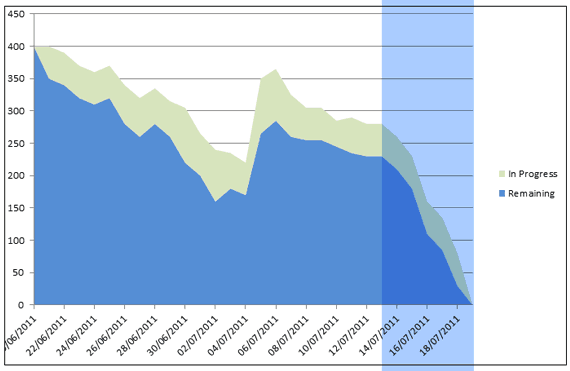
Things have gone horribly wrong. As they always do.
The start of Stage 4 is marked by a feverish game of email tennis between Team Leaders trying to find somebody to share the blame of yet another unsatisfactorily finished iteration.
Next, once blame has been sufficiently apportioned amongst team leaders, the less-feverish, more subtle game email tennis with upper management and key stakeholders begins. Each Team Leader starts sending brief notes about how they will miss one or two tasks by a slim margin, but they have already set aside time to mop them up in the next month's work.
If the senior management and key stakeholders weren't so busy playing golf and moaning about their incompetent staff, they'd notice that each of the brief emails soon add up to quite a comprehensive failure.
Thus, tasks are "descoped", which is Swahili for "removed from this iteration and added to the next month's work load".
This gives the Burn Down Chart a neat descent to 0 at the end of the iteration.
And because the pretty, colourful chart is all the senior management and key stakeholders will actually look at, they will think all is perfectly well and daydream about the girl behind the bar at the 19th Hole while you describe in incredible detail why you missed every single task at the End of Iteration Review Briefing.
"Marvellous job, lads," they will say. "Seems all is going well here, I'm going to the pub."
Because "Agility" is Eastern Morroccan for "What the boss doesn't know won't hurt him."
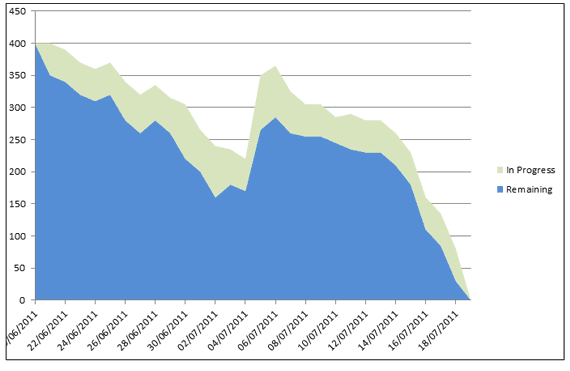
Comments...